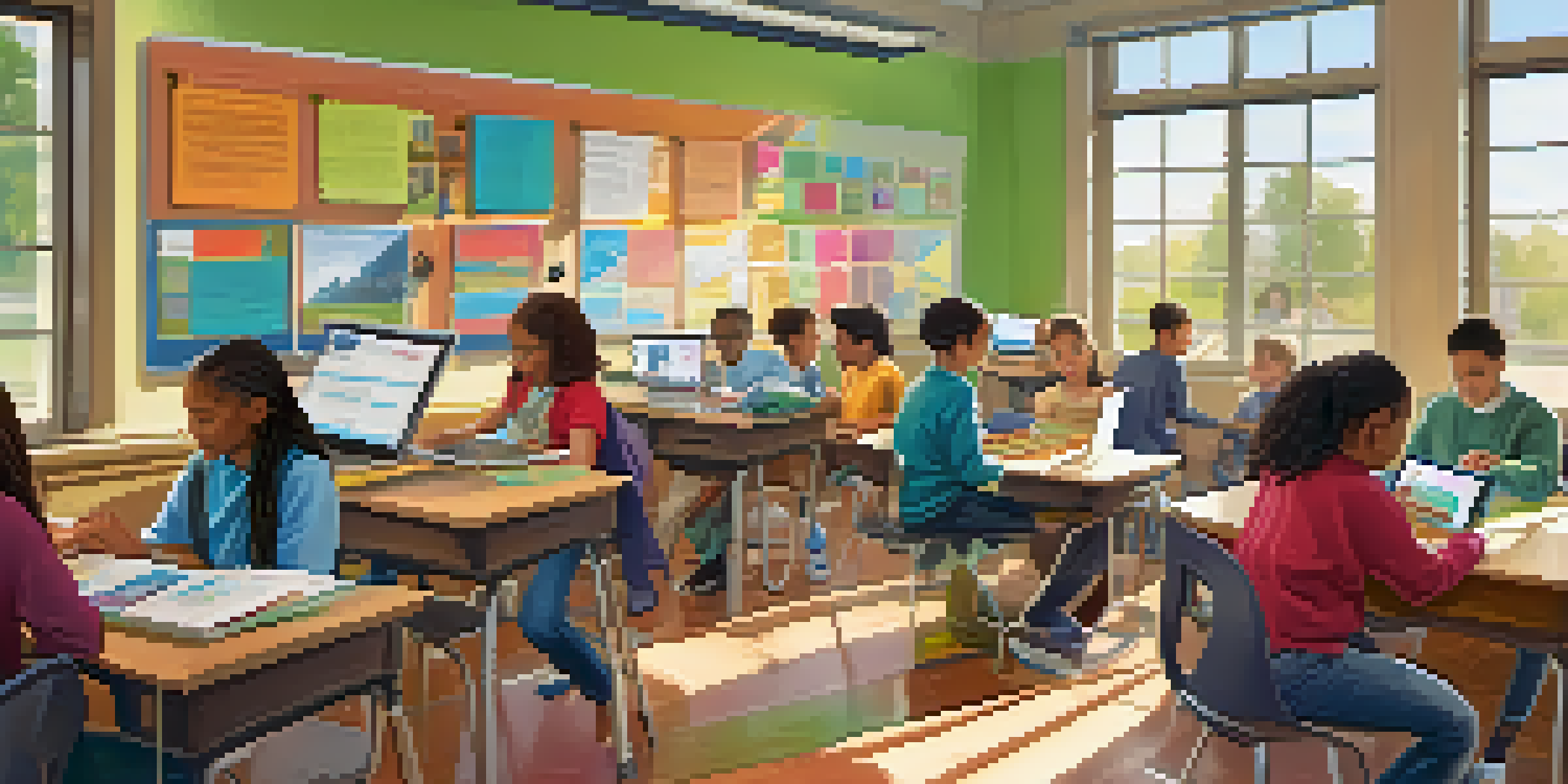Using Technology to Enhance Constructivist Learning

Understanding Constructivist Learning Principles
Constructivist learning is an educational approach where students build their understanding and knowledge through experiences. Instead of passively receiving information, learners engage actively with content, making connections to their prior knowledge. This method encourages critical thinking, problem-solving, and collaboration among peers, which are essential skills in today’s world.
Learning is not a spectator sport. Students do not learn much just by sitting in classes listening to teachers, memorizing prepackaged assignments, and spitting out answers. They must talk about what they are learning, write about it, relate it to past experiences, and apply it to their daily lives.
At the heart of this approach is the idea that learning is personal and contextual. Each student brings unique experiences and perspectives, making their learning journey distinct. By valuing students' backgrounds, educators can create a more inclusive and effective learning environment.
Incorporating technology into this framework can significantly amplify these principles. With access to digital tools and resources, students can explore concepts at their own pace, collaborate with others globally, and engage with interactive content that resonates with their interests.
Technology as a Tool for Collaboration
One of the standout features of technology is its ability to foster collaboration among students. Tools like Google Classroom, Padlet, and Microsoft Teams allow learners to work together on projects, regardless of their physical location. This connectivity mirrors real-world work environments, preparing students for future teamwork.

Collaboration through technology also breaks down barriers. Students from different backgrounds and locations can come together, share ideas, and learn from one another. This diversity enriches the learning experience and broadens perspectives, making it a hallmark of constructivist learning.
Active Learning through Technology
Constructivist learning emphasizes student engagement, allowing learners to build knowledge through experiences and collaboration.
Moreover, these platforms often come with features that support communication, such as chat functions and shared documents. This instant access to feedback and ideas encourages a dynamic learning environment where students feel more engaged and invested in their projects.
Interactive Learning through Gamification
Gamification is an exciting way to enhance constructivist learning by integrating game elements into educational activities. By turning lessons into challenges or competitions, students are more likely to engage deeply with the material. For instance, platforms like Kahoot and Quizlet transform assessments into interactive games that make learning fun.
Technology is just a tool. In terms of getting the kids working together and motivating them, the teacher is the most important.
This approach not only boosts motivation but also fosters a sense of community. When students compete or collaborate in a game-like setting, they build relationships and develop social skills. It’s a win-win: they learn the content while also honing their teamwork abilities.
Additionally, gamification can provide immediate feedback, allowing students to understand their progress and areas for improvement. This instant recognition helps learners take ownership of their education, a key tenet of constructivist learning.
Personalized Learning Experiences Through Technology
Technology enables personalized learning, allowing students to progress at their own pace and according to their individual needs. Adaptive learning platforms like DreamBox and IXL tailor content to each learner, ensuring that they are challenged without feeling overwhelmed. This customization is vital in a constructivist framework where student agency is encouraged.
With personalized learning, educators can focus on guiding students rather than delivering one-size-fits-all instruction. This shift allows teachers to spend more time on facilitation and less on lecturing, creating a more student-centered classroom environment.
Personalized Learning is Key
Technology supports personalized learning by tailoring educational content to individual needs, enhancing student agency and ownership.
Moreover, personalized technology tools can help identify gaps in knowledge. By analyzing student performance data, educators can intervene with targeted support, ensuring that every learner has the opportunity to succeed.
Access to Diverse Resources and Information
The internet opens up a wealth of resources that can enhance constructivist learning. From online libraries to educational videos on platforms like YouTube, students have access to a variety of materials that cater to different learning styles. This abundance encourages exploration and curiosity, essential components of the constructivist approach.
Additionally, technology facilitates the use of real-world examples and case studies, making learning more relevant. For instance, using virtual field trips or interactive simulations allows students to experience concepts firsthand, bridging the gap between theory and practice.
Furthermore, these diverse resources encourage critical thinking as students evaluate information from multiple sources. This skill is crucial in today’s information-rich world, where discerning credible information is paramount.
Encouraging Reflection and Self-Assessment
Reflection is a key component of constructivist learning, and technology can support this process effectively. Tools like blogs, e-portfolios, and digital journals allow students to document their learning experiences and reflect on their growth. This practice encourages metacognition, where learners think about their own thinking.
Self-assessment tools can also enhance this reflective practice. By using rubrics or checklists available on digital platforms, students can evaluate their work against set criteria, fostering a sense of ownership over their learning outcomes.
Challenges of Digital Equity
While technology enhances learning opportunities, issues like the digital divide must be addressed to ensure all students have equal access.
Moreover, technology enables peer feedback, which can enhance the reflection process. By sharing their thoughts and receiving insights from classmates, students gain different perspectives, further enriching their learning experiences.
Challenges and Considerations in Using Technology
While technology offers numerous benefits for constructivist learning, it also presents challenges. One significant issue is the digital divide, where not all students have equal access to technology. This disparity can lead to inequities in learning opportunities, which educators must address to ensure inclusivity.
Additionally, there's the challenge of ensuring that technology is used effectively and not merely as a replacement for traditional methods. Educators must be intentional in selecting tools that genuinely enhance learning rather than distract from it. This requires ongoing professional development and support.

Lastly, it’s essential to maintain a balance between technology use and face-to-face interactions. While digital tools can enhance collaboration, the human element of learning should not be overlooked. Building relationships and fostering a classroom community is crucial for constructivist learning to thrive.